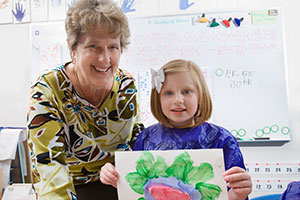 Early childhood STEM (Science, Technology, Engineering, and Mathematics) programming is a priority in Pennsylvania libraries, with a huge push to add science, math, or both to library storytimes. The idea can be daunting; science has been a subject that simultaneously fascinates and confounds me, and the idea gave me pause. But the children's section is broken down into manageable chunks and reading times are already full of STEAM! Animals (science), counting (math), and constructing crafts (engineering and art) are just a few ideas we explore each week.
Early childhood STEM (Science, Technology, Engineering, and Mathematics) programming is a priority in Pennsylvania libraries, with a huge push to add science, math, or both to library storytimes. The idea can be daunting; science has been a subject that simultaneously fascinates and confounds me, and the idea gave me pause. But the children's section is broken down into manageable chunks and reading times are already full of STEAM! Animals (science), counting (math), and constructing crafts (engineering and art) are just a few ideas we explore each week.
This winter, Lansdowne Library, just outside of Philadelphia, PA, explored sound during our preschool storytime. Here are some ideas from the program.
Books we used
Shh! We Have a Plan by Chris Haughton. The characters in this book are on the hunt for birds, and their stealthy hunting is thwarted by an excited member of their hunting party. This book is a great way to explore quiet and loud and discuss volume.
Hand, Hand, Fingers, Thumb by Al Perkins. With this book, we explored different sounds created when using different body parts. Themes from this book were used to make rhythm patterns using instruments.
Little Beaver and the Echo by Amy McDonald. Echoes and vibrations were discussed as we used this book.
Further exploration
Shaker Eggs: Children made their own shaker eggs as a souvenir. To create these eggs, children were given empty plastic eggs and offered beads in a variety of sizes to create a shaker egg with a unique sound. Children and their parents had to use trial and error to figure the amount of filler needed to create a unique sound.
Guess the Sound: Objects that made different sounds were placed in a large, brown paper bag, and children had to guess what the sounds in the bag were. Children would also take guesses about what they thought was in the bag. Objects included shakers eggs, bells, marbles, popsicle sticks, plastic toys, and feathers.
Create a Whisper Tube: Using paper towel rolls and paper cups, we created a series of tubes to demonstrate how sound travels.
The Echo Game: Children had to mimic sounds and were then given the opportunity to create their own for the other attendees to mimic.
Making Music: Children created original pieces using musical instruments.
Things to remember
This program will be LOUD. Prepare your young readers and families ahead of time so that children who may have aversion to loud noises know what to expect and can take a break if needed.
Not knowing everything is OK. In fact, I like to let the children lead investigations to discover the answer to some questions that allude us.
The program should be fun! Science and math themes can be applied to everyday life and should be shared in a way to promote curiosity and not stress. Families and children were excited to try something different, presenting familiar books with a fresh theme was fun.
 Rachee Fagg is head of children’s services at the Lansdowne Public Library in Lansdowne, PA.
Rachee Fagg is head of children’s services at the Lansdowne Public Library in Lansdowne, PA.